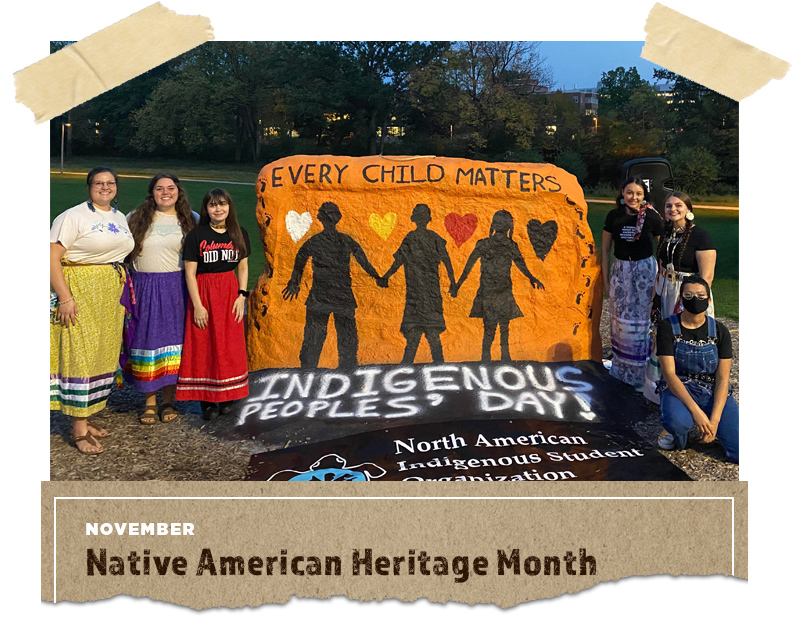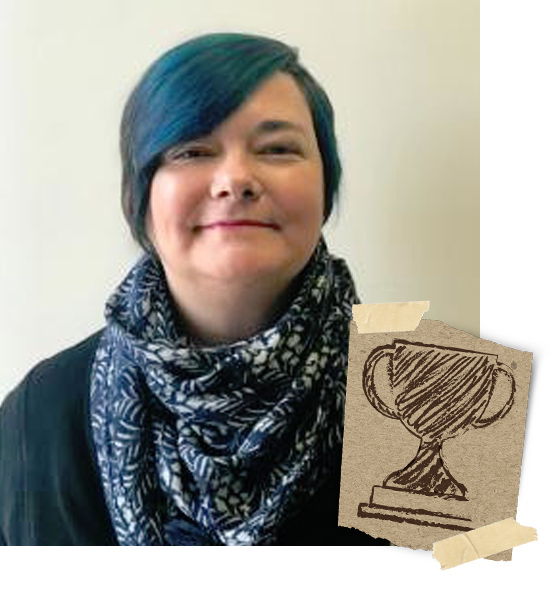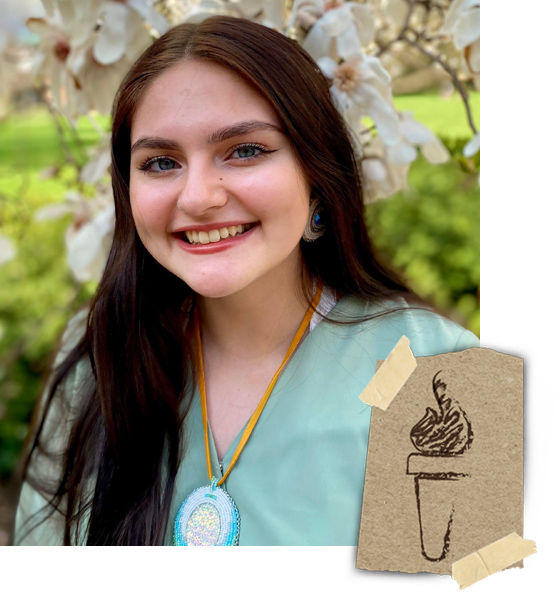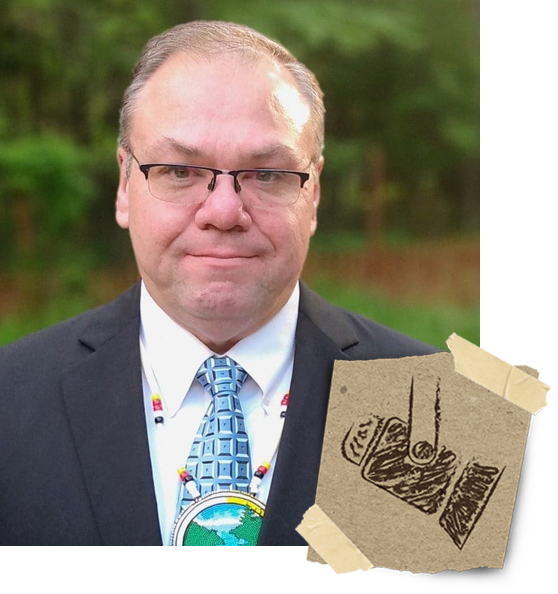National Native American Heritage Month 2021

DEI Torch Roxy Mashkawiziikwe Sprowl Bezhigonoodinkwe paints the MSU Rock with her fellow students in the MSU North American Indigenous Student Organization for Indigenous Peoples Day 2021.
This month, we celebrate "National Native American Heritage Month" which recognizes the significant contributions that the first Americans made to the establishment and growth of the United States.

Diversity Champion
Faculty/Staff
Dr. Heather Howard
Dr. Heather Howard, an MSU Anthropology associate professor has dedicated her career to promoting our understanding of Native American heritage, through community engaged research.

Diversity Torch
Student
Roxy Mashkawiziikwe Sprowl
Roxy Mashkawiziikwe Sprowl, a citizen of Red Cliff Band of Lake Superior Ojibwe, is a second-year student in the MSU School of Social Work and is in the MSU Social Science Scholars Program. She is a member of the Bridge Scholars Program, a STARR Scholar, and the Public Relations Representative for the North American Indigenous Student Organization (NAISO).

Diversity Spotlight
Alumni
Jason Cross
Jason Cross, an enrolled citizen of the Little River Band of Ottawa Indians, is an MSU School of Social Work alumnus. An award-winning children’s advocate, Cross has a wealth of experience in the tribal government sector. He is presently the State Manager of Indian Child Welfare Act (ICWA) Compliance and Race Equity.
Additional Resources
-
Books
-
Allard, Seth. (2018). Guided by the Spirits: The Meanings of Life, Death, and Youth Suicide in an Ojibwa Community. London, UK: Routledge.
-
Applegate Krouse, Susan and Heather A. Howard, eds. (2009). Keeping the Campfires Going: Native Women’s Activism in Urban Areas, Lincoln: University of Nebraska Press.
- Barton, Barbara J. Manoomin: the story of wild rice in Michigan. MSU Press, 2018.
-
Beck, Lauren. (2021). “Euro-Settler Place Naming Practices for North America through a Gendered and Racialized Lens.” Terrae Incognitae, 53(1), 5-25.
-
Clifton, James A. (1986). People of the Three Fires: The Ottawa, Potawatomi, and Ojibway of Michigan. [Workbook and Teacher's Guide]. Grand Rapids, MI: Michigan Indian Press.
-
Doherty, Robert. (2009). Disputed Waters: Native Americans and the Great Lakes Fishery. Lexington, KY: University Press of Kentucky.
-
Dunbar-Ortiz, Roxanne and Dina Gilio-Whitaker. (2016). “All the Real Indians Died Off” and 20 Other Myths about Native Americans.
-
Green, Rayna. (1975). “The Pocahontas Perplex: The Image of Indian Women in American Culture,” The Massachusetts Review, 1 (4): 698-714.
-
Greenwood, Margo., Sarha De Leeuw, and Nicole Marie Lindsay (Eds.). (2018). Determinants of Indigenous Peoples' Health: Beyond the Social, 2nd Toronto, Canada: Canadian Scholars.
-
Howard, Heather A. and Craig Proulx, eds. (2011). Aboriginal Peoples in Canadian Cities: Transformations and Continuities, Waterloo, ON: Wilfrid Laurier University Press, Indigenous Studies Series.
-
Kimmerer, Robin Wall. Braiding sweetgrass: Indigenous wisdom, scientific knowledge and the teachings of plants. Milkweed Editions, 2013.
-
Lebeau, Patrick R. (2005). Rethinking Michigan Indian History. East Lansing, MI: Michigan State University Press.
-
Low, John. N. (2016). Imprints: The Pokagon Band of Potawatomi Indians and the City of Chicago. MSU Press.
-
Nesper, Larry. (2002). The Walleye War: The Struggle for Ojibwe Spearfishing and Treaty Rights. Lincoln, NE: University of Nebraska Press.
-
Noodin, Margaret. (2021). “Wanitoon ani Mikan Odenang: Anishinaabe Urban Loss and Reclamation.” Urban History Review, 48(2), 16-31.
-
Pokagon, Simon. (2011). Pokagon, S. (2011). Ogimawkwe Mitigwaki (Queen of the Woods). East Lansing, MI: Michigan State University Press.
-
Teves, Stephanie Nohelani, Andrea Smith, and Michelle H. Raheja, eds. (2015). Native Studies Keywords. Tucson, AZ: The University of Arizona Press.
-
Vizenor, Gerald. (1999). Manifest Manners: Narratives on Postindian Survivance. Lincoln, NE: University of Nebraska Press.
-
Wetzel, Christopher. (2015). Gathering the Potawatomi Nation: Revitalization and Identity. Tulsa, OK: University of Oklahoma Press.
-
Tommy Orange (2019) There, There. Vintage; Reprint edition
-
Waubeshig Rice (2018) Moon Of The Crusted Snow. ECW Press; 1st edition
-
Terese Marie Mailhot (2019) Heart Berries: A Memoir Counterpoint; Reprint edition
-
Jesmyn Ward (2012) Salvage the Bones. Bloomsbury; 1st edition
-
Stephen Graham Jones (2021) My Heart Is A Chainsaw Simon & Schuster Audio
-
Brown, Kirby. 2018. Stoking the Fire: Nationhood in Cherokee Writing, 1907-1970. Norman: University of Oklahoma Press.
-
Calloway, Colin G. (2012). First Peoples: A Documentary Survey of American Indian History, 4th edition. New York. Bedford-St. Martins.
-
Chamberlain, Kathleen P. (2000). Under Sacred Ground: A History of Navajo Oil, 1922-1982. University of New Mexico Press.
-
Brown, Dee (1970). Bury My Heart at Wounded Knee: An Indian History of the American West. New York. Open Road Media.
-
Farella, John R. (1984). The Main Stalk: A Synthesis of Navajo Philosophy. Tucson. University of Arizona Press.
-
Garroutte, Eva Marie. 2003. Real Indians: Identity and the Survival of Native America. Berkeley: University of California Press.
-
Jacobs, Margaret D. 2014. A Generation Removed: The Fostering and Adoption of
Indigenous Children in the Postwar World. Lincoln: University of Nebraska Press. -
Sleeper-Smith, Susan. (2018). Indigenous Prosperity and American Conquest: Indian Women of the Ohio River Valley, 1690-1792. Chapel Hill. University of North Carolina Press.
-
Smithers, Gregory D. (2015). The Cherokee Diaspora: An Indigenous History of
Migration, Resettlement, and Identity. New Haven: Yale University Press. -
Deloria, Philip J. 1998. Playing Indian. New Haven: Yale University Press.
-
Silko, Leslie Marmon (1977). Ceremony. New York. Penguin.
-
Standing Bear, Luther (1933). Land of the Spotted Eagle. University of Nebraska Press.
-
-
Articles
-
Child, Brenda J. (Red Lake Ojibwe). “The Boarding School as Metaphor,” Journal of American Indian Education 57, no. 1 (Spring 2018): 37-57.
-
Devens, Carol. (1986). “Separate Confrontations: Gender as a Factor in Indian Adaptation to European Colonization in New France.” American Quarterly 38, no. 3, 461-480.
-
Lowery, Malinda Maynor (Lumbee). “Racial Science and Federal Recognition: Lumbee Indians in the Jim Crow South,” in Recognition, Sovereignty Struggles, and Indigenous Rights in the United States: A Sourcebook, Amy E. Den Ouden and Jean O’Brien (Chapel Hill: University of North Carolina Press, 2013): 65-94.
-
Merritt, Jane, T. (1997). "Dreaming of the Savior's Blood: Moravians and Indians and the Great Awakening in Pennsylvania." William and Mary Quarterly 54, no. 4, 723-746.
-
Riding, James. (2002). “The United States v. Yellow Sun et al. (The Pawnee People): A Case Study of Institutional and Societal Racism and U.S. Justice in Nebraska from the 1850s to 1870s,” Wicazo Sa Review 17, no. 1, 13-41.
-
Rosier, Paul C. “‘They Are Ancestral Homelands’: Race, Place, and Politics in Cold War Native America, 1945-1961,” The Journal of American History 92, no. 4 (March 2006): 1300-1326.
-
Smithers, Gregory. “Why Do So Many Americans Think They Have Cherokee Blood?”. Slate. October 1, 2015.
https://slate.com/news-and-politics/2015/10/cherokee-blood-why-do-so-many-americans-believe-they-have-cherokee-ancestry.html
-
-
Films
-
American Masters: N. Scott Momaday: Words from a Bear (2020)
-
Basketball or Nothing (2019)
-
Awake: A Dream From Standing Rock, directed by Myron Dewey (2017)
-
The Seventh Fire, directed by Jack Pettibone Riccobono (2015)
-
The Warrior Tradition, directed by Lawrence Hott (2019)
-
Indian Horse, directed by Stephen Campanelli (2017)
-
The Body Remembers When the World Broke Open, directed by Elle-Maija Tailfeathers (2019)
-
There’s Something in the Water, directed by Ellen Page (2019)
-
In Whose Honor? American Indian Mascots in Sports (1997), film, available on Netflix.
-
White Shamans and Plastic Medicine Men (1996), film, available on YouTube.
-
Make Prayers to the Raven (1987, 2007), film.
-
-
MSU Resources
-
MSU librarian list: https://libguides.lib.msu.edu/c.php?g=95603&p=624366
-
MSU Press has an Indigenous studies series as well as partnership with the University of Manitoba Press that publishes extensive recommended works:
- https://msupress.org/search-results-grid/?keyword=indigenous
-
-
Podcasts
-
Native American Calling Radio
-
This Land
-
Native Opinion
-
All My Relations Podcast
-
Telling Our Twisted Histories
-
Two Crees in a Pod
-
The Indigenous Café Podcast
-
Think Indigenous
-

